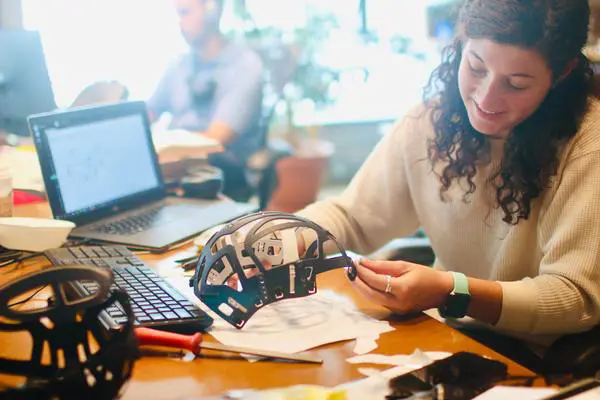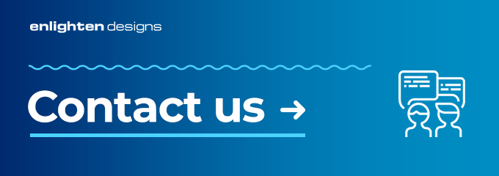Blog
Merging Design Thinking with Marketing
30 August 2021
For years, marketers were responsible for pushing a product out to customers, regardless of whether it met their needs. Design thinking stands in sharp contrast with that way of doing things: it’s about designing a product that meets customers’ needs. As a result, designers trained in this philosophy frequently clash with the marketing department, who still see part of their job as pushing products into the market.
How can you resolve that conflict, so your marketing team doesn’t lock horns with the designers? We’ll explore what mindsets need to shift for less conflict and better products.

The Historical Role of Marketing and Product Designers
For years, the marketing department was in charge of several functions:
- Coming up with ideas for new products
- Pricing products
- Product distribution
- Promoting new products
Product designers were responsible for creating the products and offering support services to marketers. Notice how there’s no mention of what the customer needs or wants in this description. As a result, marketers focused on creating products that benefited the company and not necessarily the end-user.
The Rise of Design Thinking
In the 1980s, Donald Norman’s lab at the University of San Diego coined the term user-centred design. User-centred design, as the name implies, puts the user first. It focuses on the user’s needs and wants when creating a product (rather than putting the product producer first).
User-centred design and design thinking are closely related: user-centred design mostly applies to digital processes and interfaces, while design thinking applies to all other types of design.
Design thinking puts the user first and focuses on the customer’s needs and wants.
Instead of pushing out a product to customers and designing a marketing campaign around it to encourage them to buy it, design thinking focuses on creating a product that fulfils a customer’s want or need.
Consumerisation is a great example of design thinking in action. We see products and services today that came to market to solve customer problems.
The Design Thinking Process
The UX design thinking process looks like this:
- Creating user personas to better understand end-users and their needs
- Defining end-user challenges
- Coming up with ideas to solve user problems
- Designing prototypes of solutions
- Testing the prototype (ideally with a group of end-users)
The user sits at the heart of the entire process. From the first step (creating customer personas) to the final steps, product designers make every effort to understand who the customer is and what that person wants.

Bear in mind that the last two steps are highly iterative. It can take several tries to get the prototype right, let alone to reach a final design. However, product designers trained in the UX design thinking philosophy understand that they most likely won’t get it right on the first try; their job is to listen to the end user’s comments and feedback to make the product better.
UX design thinking incorporates end-user feedback to make the product better.
Contrast this with the product design process before UX design thinking became popular; marketers designed products to make money for the company, not to meet customers needs. While product design was an iterative process, end-users had no chair at the table. UX design thinking might require more iterations of prototypes and more rounds of testing. Yet it yields a product that customers will actually want to buy.
The Clash of Marketing and Product Design
As a result of design thinking, marketers and product designers now find themselves at odds. Marketers are used to dictating what products will go to market, yet that no longer sells. Product designers, who previously spent a great deal of time being frustrated by marketing decisions about products, finally have the opportunity to create something that satisfies a customer need.
Solving the Conflict between Marketing and Product Designers
To merge marketing and UX, a few things need to happen:
- Break down silos
- Focus on the customer journey
- Create a single narrative
- Collaborate beyond the company walls if necessary
Break Down Silos
To incorporate UX design thinking into marketing, the marketing team and product designers can’t sit in silos. They have to work together to design products that customers want.
When silos exist, they prevent teams from working together effectively. Ideas can’t flow freely, and mindsets (such as, ‘Our opinion matters more – you have to listen to us’) will never change.
Focus on the Customer Journey
Once the product design team and marketers start working together, their first order of business is to map the customer journey.
The customer journey is a set of sequential steps or interactions a customer has when that person decides to do business with a given organisation. Your customer’s journey plays a significant role in UX design thinking. By understanding all of the steps your customer goes through, you can design products and services to meet the customer’s needs.
Create a Single Narrative
When the marketing team and product designers work together to understand the customer journey, maybe they’ll look at the journey through different lenses. While it’s understandable that different people will have more than one perspective, using more than one term to describe a section of the customer journey will lead to problems down the road.
Creating a common language for describing the customer journey will lead to fewer misunderstandings and a better product design process.
Collaborate Beyond the Company Walls, If Necessary
You might not have all of the internal resources to incorporate UX design thinking into your marketing processes. Maybe you don’t have a team that can assess the customer journey, or perhaps you’re struggling to figure out a common language for designers and marketers to work together.
A third party with design thinking expertise (especially one who helps bridge gaps between different departments) can be a valuable addition.
Enlighten: Your UX Design Thinking Partner
For over two decades, Enlighten has delighted customers with amazing digital experiences. Our user-centred design and UX design thinking philosophies mean we put customers at the centre of product design. To learn more, Contact Us.
Recent Articles
- Look what happens when the creator of the Enlighten Aquarium gets a 3d printer!
- Performance of PHP Web Applications migrated to Azure PaaS
- Azure Static Web Apps - Performance
- Legacy Application Decomposition Patterns: A Key to Successful Application Modernisation
- Google's Gemini 1.0 - A Formidable New Player in AI

